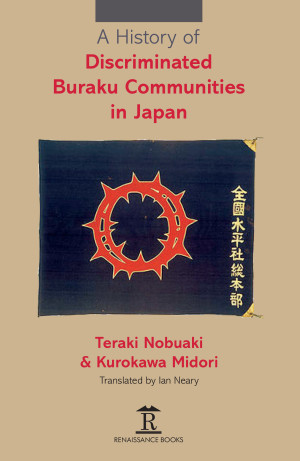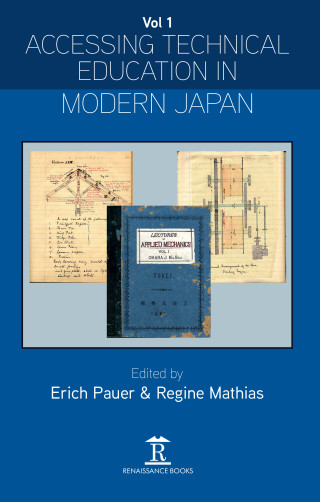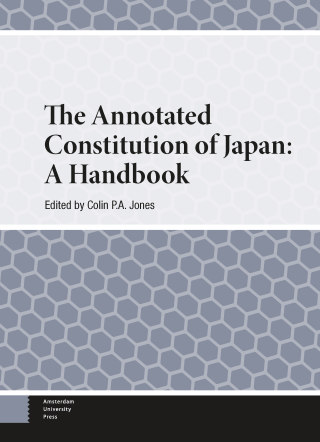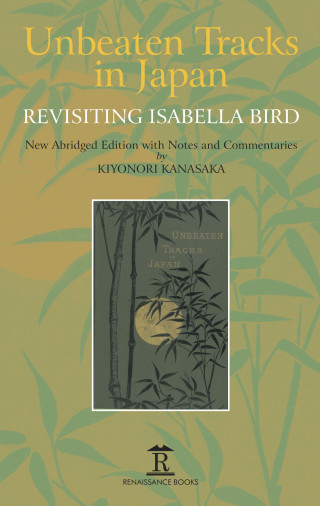
Vanaf 1 oktober worden Engelstalige AUP-boeken uitgegeven door Taylor & Francis. Meer informatie: AUP en Taylor & Francis werken samen aan Engelstalig boekenprogramma
Teraki Nobuaki, Kurokawa Midori
A History of Discriminated Buraku Communities in Japan
At the heart of modern Japan there remains an intractable and divisive social problem with its roots in pre-history, namely the ongoing social discrimination against the D?wa communities, otherwise known as Buraku. Their marginalization and isolation within society as a whole remains a veiled yet contested issue. Buraku studies, once largely ignored within Japan’s academia and by scholarly publishers, have developed considerably in the first decades of the twenty-first century, as the extensive bibliographies of both Japanese and English sources provided here clearly demonstrates. The authors of the present study published in Japanese in 2016 and translated here by the Oxford scholar Ian Neary, have been able to incorporate this most recent data. Because of its importance as the first Buraku history based on this new research, a wider readership was always the authors’ principal focus. Yet, it also provides a valuable source book for further study by those wishing to develop their knowledge about the subject from an informed base. This history of the Buraku communities and their antecedents is the first such study to be published in English.
Auteurs
- Titel
- A History of Discriminated Buraku Communities in Japan
- Auteurs
- Teraki Nobuaki
- Kurokawa Midori
- Prijs
- € 104,00 excl. BTW
- ISBN
- 9781898823964
- Uitvoering
- Hardback
- Aantal pagina's
- 224
- Taal
- Engels
- Publicatiedatum
- 28 - 06 - 2019
- Afmetingen
- 14.6 x 22.2 cm
- Categorieën
- East Asia and North East Asia
- Sociology and Social History
- Discipline
- Asian Studies
- Ook beschikbaar als
- eBook PDF - € 103,99
·Translator’s Preface by Ian NEARY Foreword by TERAKI Nobuaki List of Figures
PART I
Chapter 1: Establishment of the Japanese State and the Formation and Transformation of Status
· Status in the small states of pre-history
· Status in the Yamato state
· The creation of the Yamato state and the formation of clans and ranks
Chapter 2: Formation of the Ritsury? State Structure and the Status System
· The formation of the ritsury? structure
· The creation of a senmin system beneath the status system of the ritsury? structures · Senmin in the ritsury? system · The disruption and dismantling of the ritsury? status system · The role played by immigrants and their social position
· Strategies and attitudes to those living on the islands to the North, the North-east and the South · The strengthening of discrimination based on ideas of pollution in the Heian period
· The origins of occupational discrimination against butchers and leather workers
Chapter 3: Formation and Development of Society in the Middle Ages and the Lifestyle and Culture of Discriminated People
· The structure and development of society in the Middle Ages
· Features of the status system of the Middle Ages
· Formation and living conditions of the eta – kiyome, saiku, kawaramono – in the early Middle Ages
· Hinin of the early Middle Ages and their way of life
· Sanjo and their lives in the early Middle Ages
· Transformation of society in the Middle Ages
· Work and livelihood of the kawaramono: eta, kiyome and saiku in the late Middle Ages
· The work of hinin, sanjo (sh?moji) and their lives in the late Middle Ages
· Kawata in the era of Warring States (Sengoku Jidai)
Chapter 4: Establishment of Kawata and Ch?ri Status – the Buraku of the Early Modern Period
· Rule of the Toyotomi, the early Tokugawa regime, and the kawata/ch?ri · Bakuhan structure of rule and the status system
· Formation of the kawata and ch?ri – the Buraku of the early modern period
· Reality of the status regulations of the Edo Period
· Control of discriminated people and the discrimination policy of the feudal lords in the early Edo Period
· Occupations of the kawata and ch?ri in the early Edo Period
· Responsibilities of kawata and ch?ri in the early Edo Period Chapter 5: Discriminated Groups of the Early Modern Period
· Formation of hinin status groups and their responsibilities
· Other discriminated groups Chapter 6: Development of Early Modern (Kinsei) Society and Discriminated People
· Social trends in the mid-Edo period and the discrimination policies used by the Bakufu authorities and feudal lords to control discriminated groups
· Occupations of the kawata and ch?ri in the mid-Edo period
· Social context of discriminated people in the mid-Edo period
· Religion and kawata/ch?ri in the mid-Edo period
Chapter 7: Dislocation and Collapse of Early Modern Society and Discriminated People
· Social trends in late-Edo Japan and discriminated people
· Changes in the occupations of the kawata and ch?ri in the later Edo Period
· Demographic change among the discriminated communities and its impact
· Struggles of discriminated groups and the development of emancipatory thought 108
· Discriminated people and social change on the verge of the Restoration – the eve of the liberation edict PART
II Chapter 8: What was the ‘Buraku Problem’ in the Modern Period?
· Questioning society · Buraku – discriminated Buraku – D?wa districts
· The boundaries that replaced status
· Start of the modern Buraku problem –the Liberation Edict · Debate in the K?gisho
· Promotion by the Minbush? and the Treasury Chapter 9: Signs of Discrimination Invented
· Maintenance of ‘old customs’
· Rejection of discrimination by the ‘Japanese Enlightenment’
· Freedom, people’s rights movement and the ‘Buraku problem’
· New ‘signifiers’ – hotbeds
PART I
Chapter 1: Establishment of the Japanese State and the Formation and Transformation of Status
· Status in the small states of pre-history
· Status in the Yamato state
· The creation of the Yamato state and the formation of clans and ranks
Chapter 2: Formation of the Ritsury? State Structure and the Status System
· The formation of the ritsury? structure
· The creation of a senmin system beneath the status system of the ritsury? structures · Senmin in the ritsury? system · The disruption and dismantling of the ritsury? status system · The role played by immigrants and their social position
· Strategies and attitudes to those living on the islands to the North, the North-east and the South · The strengthening of discrimination based on ideas of pollution in the Heian period
· The origins of occupational discrimination against butchers and leather workers
Chapter 3: Formation and Development of Society in the Middle Ages and the Lifestyle and Culture of Discriminated People
· The structure and development of society in the Middle Ages
· Features of the status system of the Middle Ages
· Formation and living conditions of the eta – kiyome, saiku, kawaramono – in the early Middle Ages
· Hinin of the early Middle Ages and their way of life
· Sanjo and their lives in the early Middle Ages
· Transformation of society in the Middle Ages
· Work and livelihood of the kawaramono: eta, kiyome and saiku in the late Middle Ages
· The work of hinin, sanjo (sh?moji) and their lives in the late Middle Ages
· Kawata in the era of Warring States (Sengoku Jidai)
Chapter 4: Establishment of Kawata and Ch?ri Status – the Buraku of the Early Modern Period
· Rule of the Toyotomi, the early Tokugawa regime, and the kawata/ch?ri · Bakuhan structure of rule and the status system
· Formation of the kawata and ch?ri – the Buraku of the early modern period
· Reality of the status regulations of the Edo Period
· Control of discriminated people and the discrimination policy of the feudal lords in the early Edo Period
· Occupations of the kawata and ch?ri in the early Edo Period
· Responsibilities of kawata and ch?ri in the early Edo Period Chapter 5: Discriminated Groups of the Early Modern Period
· Formation of hinin status groups and their responsibilities
· Other discriminated groups Chapter 6: Development of Early Modern (Kinsei) Society and Discriminated People
· Social trends in the mid-Edo period and the discrimination policies used by the Bakufu authorities and feudal lords to control discriminated groups
· Occupations of the kawata and ch?ri in the mid-Edo period
· Social context of discriminated people in the mid-Edo period
· Religion and kawata/ch?ri in the mid-Edo period
Chapter 7: Dislocation and Collapse of Early Modern Society and Discriminated People
· Social trends in late-Edo Japan and discriminated people
· Changes in the occupations of the kawata and ch?ri in the later Edo Period
· Demographic change among the discriminated communities and its impact
· Struggles of discriminated groups and the development of emancipatory thought 108
· Discriminated people and social change on the verge of the Restoration – the eve of the liberation edict PART
II Chapter 8: What was the ‘Buraku Problem’ in the Modern Period?
· Questioning society · Buraku – discriminated Buraku – D?wa districts
· The boundaries that replaced status
· Start of the modern Buraku problem –the Liberation Edict · Debate in the K?gisho
· Promotion by the Minbush? and the Treasury Chapter 9: Signs of Discrimination Invented
· Maintenance of ‘old customs’
· Rejection of discrimination by the ‘Japanese Enlightenment’
· Freedom, people’s rights movement and the ‘Buraku problem’
· New ‘signifiers’ – hotbeds




